








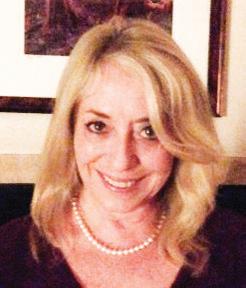


As we welcome February and look to warmer days ahead, our community is still recovering from the severe rainstorm we encountered last month. At the time of writing, the Sheriff’s Department continues its search for missing 5-year-old boy Kyle Doan, who was swept away by raging floodwaters on January 9 near San Miguel. Our thoughts and prayers are with the family and our community.
Our community was deeply impacted; a special thank you to emergency services, and the National Guard for being there for all those in need. Our thoughts are with the many residents displaced from their homes who now face the daunting task of rebuilding and clean-up. Despite the challenges, there are heartwarming stories of resilience and community support as people come together to help one another. Volunteers are offering their time and resources to help with the clean-up and rebuilding efforts. That is what makes our community so special.
In today’s fast-paced world, it can be all too easy to get caught up in the hustle and bustle of daily life and neglect our health and well-being. From long work hours to constant social media stimulation, it can









be challenging to make time for ourselves and prioritize our physical and mental health. But it’s important to remember that our health and well-being should be at the top of our list of priorities. This can include simple things like taking a few minutes each day to meditate or practice deep breathing exercises, going for a walk or run, or even just taking a few minutes to sit and enjoy a cup of tea and just be. Be being kind and compassionate to yourself, and recognize that your needs are just as important as anyone else’s. It’s about taking the time to do things that make you happy, whether that’s reading a book, going for a walk, or simply taking a few minutes to sit and breathe.
One thing I have learned over the years is don’t be afraid to make mistakes. Failure is a part of the process, so don’t let it discourage you. Learn from your mistakes and move on. The more you try, the more you will learn and the closer you will get to achieving your goals. Believing in yourself and having faith that you can achieve your dreams is the key to making them a reality. With hard work,

determination, and a positive attitude, you can accomplish anything.
We hope you all have a wonderful February and a Happy Valentine’s Day. We appreciate all your love and support and look forward to what this year will bring.
We hope you enjoy this month’s issue of Avila Beach Life.











Greetings, fellow Avilones. February is upon us, and I bet you know what’s coming. This is the month we celebrate Valentine’s Day and President’s Day holidays. And, of course, my wife’s birthday. For the past 13 years, two of these dates were enjoyed with our now deceased, but not forgotten, dog Dodger, so it will be strange/ sad not having him around to help shop for greeting cards and presents. For some reason he always insisted on purchasing a supply of doggie treats for his “mom.”
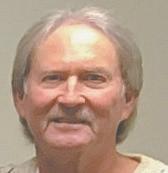
By the time you receive this publication, about three weeks will have passed since the devastating January storms roiled Avila


Beach and other parts of SLO County. Avila was hit particularly hard with water rising above the creek, spilling onto the main roads into town, and swamping businesses at Avila Village, Avila Bay Athletic Club and Avila Beach Golf Resort. Sadly, a life was lost during rampaging flooding on Avila Beach Drive near Sycamore Mineral Springs. And if all that wasn’t bad enough, the greater Avila communities were without power for nearly two full days!
While we cannot control all effects of Mother Nature, how we respond always leaves an impression. And I have to say that I was NOT impressed with what my wife and I experienced on the evening of Jan. 9. I share this debacle with you to vent my frustration. After languishing without power the entire day, we ventured out to South County to pick up some prescription medication and grab some dinner since it wasn’t raining very hard at that time. The “circus” began when we tried to drive back home on the 101 after entering the 4th Street onramp. Things looked good as we headed northbound toward Avila. We knew the Avila Beach Drive offramp was closed, thus planned on taking the San
Luis Bay Drive offramp. No such luck — the northbound freeway was closed, and all vehicles were forced to exit at Avila Beach Drive. What!!!!

We quickly came upon a line of cars and freight trucks that exited before us, as well as the flashing lights of patrol cars ahead blocking further travel. There we sat for several minutes, then inched closer to the front of the line, which we knew to be a dead end. Drivers were being re-routed back onto the southbound onramp to head where? Who knows?
Finally, as I began approaching a patrol car to get some information, word came via loudspeaker that in order to travel north into San Luis Obispo or beyond, drivers should head back to Price Canyon Road, take it to Highway 227, then find their way back onto the 101. Not one word about how we could get back home to Avila. Did they close the San Luis Bay Drive exit as well? Fortunately knowing our way around, we continued along Highway 227/Broad Street to South Street, to Higuera Street, to Madonna Road, onto southbound 101, then were able to exit on San Luis Bay Drive and
make our way home.
So, why the heck was San Luis Bay Drive exit closed coming from the south and not from the north? From what we could view, no flooding reached that exit side. Thus, what could have been a five-minute drive home became a very circuitous 2-mile, one-half hour detour. I suppose one could find a comical side to this story, but all in all, it left a sour taste in my mouth. Most striking was the lack of information or direction. Some signage on the freeway forewarning drivers would have been helpful, but none was seen in either direction, at least not so on our routes. Likewise, patrol officers on the scene could have been more helpful than just sitting in their squad cars with lights flashing.
I worry what will happen when a greater disaster visits the area. Are the responders we rely upon truly prepared to act? I imagine that question won’t endear me to our friends in public service, but I feel it must be asked. I do so not in my capacity with the Avila Beach Community Foundation, but as a citizen of San Luis Obispo County. That’s all for now, fellow Avilones. See you at the beach!
You may have read a number of articles with stock market predictions about the new year, maybe even predictions from the big firms like Morgan Stanley or Citibank. Forecasts are always popular because people are looking for “certainty” in their investing. Here’s my prediction—most everyone will be wrong because, most likely, 2023 isn’t going to follow anyone’s script. Just research the 2022 predictions for proof.
This is why. Even if you knew what the economic data was going to be, it’s still virtually impossible to know how the market is going to receive it. An example was the year’s low point of the market on Oct 13, 2022. The CPI report showed inflation high and was “worse than expected”*^ and the market dropped, at first. Then it recovered and rocketed up 2.6% on the day*. Even if the data was known ahead of time, most people would have bet wrong.
So, the question is, what to do now? How about investing in a way where you don’t care about stock market predictions. Where you have money earning high fixed interest and money that will increase if the stock indexes go up that is also protected from losses^. The investing world has changed. Maybe it’s time to look at some new ideas. To learn more, please visit our website and/or call for a 15 minute discussion.
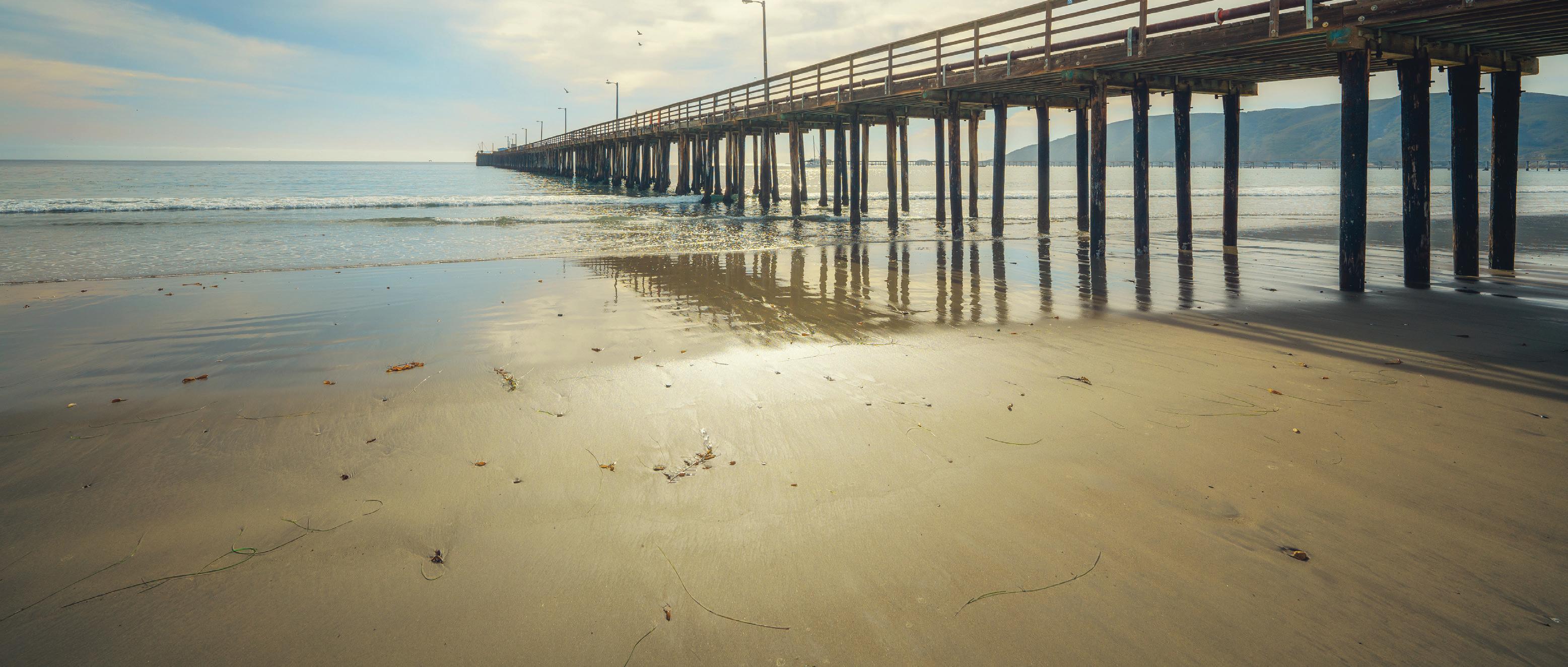
Hi All,
I really hate to repeat myself, but … what is going on with our weather???? First, I had to cancel our Santa’s Doggie Parade due to the weather, then we lost our power for two days and our roadways were flooded …and now we are inundated with mud, downed trees, and roadways still closed. As I mentioned last month, we are hosting our first-ever Cupid Paws Doggie Parade on Saturday, Feb. 4, and want everyone to know that red costumes for Christmas or Valentine’s Day would be totally
appropriate! Registration and check-in will be held in front of the Old Custom House from 10 to 10:45 a.m. and the parade will begin at 11 a.m. Petco Arroyo Grande once again donated doggie treat bags for each participant! Please check out our website at www.avilabeachcc.com for more information and your registration form. See you at the parade! We are in the midst of our annual Membership Campaign and hope that you will renew your membership or become a new member to help us support the programs and operations

of the Avila Beach Community Center. I sent out a survey of our current and past members to determine which events we should present this year. Our Spaghetti Dinner/Bingo Nights, Pancake Breakfast, Avila Apple Festival, and, of course, our Doggie Parades were the favorites. Our Board of Directors will be meeting later this month to discuss which events we can present this year and will be updating you soon. Any input that you would like to offer would be greatly appreciated so don’t hesitate to call or email your thoughts … and get involved!
Anyone who lives or visits the Indian Hill neighborhood in the San Luis Bay Estates knows where Tom and Terry Johnstone live during Christmas. Tom absolutely loves decorating for the holidays here and in Los Angeles, and helps those of us who aren’t quite as talented to ring in the festivities.
Tom was born and raised in Lake Arrowhead and earned his Bachelor’s degree in history at the University of Santa Clara. He then earned a Master’s degree in Latin American history from UCLA and a Master’s degree in counseling from Loyola Marymount University, and then received his doctorate in institutional management from Pepperdine University.
Tom is fluent in Spanish and was a foreign exchange student in Venezuela during his junior year in high school, and again in Spain during his junior year at Santa Clara. He loved teaching kids and coached Little League girls’ softball for 10 years, served as vice president of Westchester Del Rey Girls Softball League, and coached AYSO soccer. He serves on the board of St. Margaret’s Center, Catholic Charities, in Lennox and served for 10
years as chairman of the board for Diabetic Camping and Education Services, which supports outdoor science programs for

children with diabetes.
Tom launched his education career as a middle school and social studies teacher
in Lennox and served as a middle school counselor; an elementary assistant principal and principal; director of curriculum, instruction, and assessment; and as the assistant superintendent of human resources. He then served as superintendent in Wiseburn until he retired in 2018.
Forty years ago, Tom met Terry while they were climbing Mount San Gorgonio, the tallest peak in Southern California, and went on their first date at the Hollywood Bowl, which they both still love attending the many wonderful programs. They have four children and are in the process of moving full-time to Avila Beach over the next few years.

Tom strongly believes in giving back to his community and has been an active member of the Hawthorne/Los Angeles International Airport/Lennox Rotary Club and the Rotary Club of Westchester. His hobbies include gardening, hiking, bicycling, and Christmas, as I already mentioned. He serves on the board of his HOA and volunteers with Friends of the Bob Jones Trail. He also is always available when someone needs help. When I asked him “why Avila?”, he said it is because it is a slice of paradise and an escape from Los Angeles where he can exhale and enjoy the quiet.
 By MARY FOPPIANO
By MARY FOPPIANO
Anne Harris and Mark Stengel adopted their sweet, loving Weimaraner Juno when she was 6 years old. They said that she was a rescue and fit right in as big sister to Captain the Russell Terrier. She later adopted a feral kitten who joined the family.

Juno, who is approaching 15 years of age, is currently the only animal in
the family. Unfortunately, she has lost most of her hearing and has slowed down some. However, she still enjoys her morning and afternoon walks around the neighborhood and delights in being greeted by both human and canine neighbors. She is a very sophisticated-looking girl whom I enjoy watching walk past my house each day.
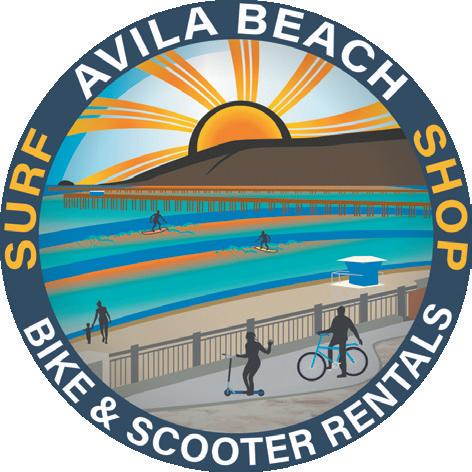
One of the artifacts at the lighthouse, although not yet on display, is the station’s “Register of Visitors.” While there are major gaps — as though the guestbook had been tucked away for some reason and then forgotten about for many years — it’s a treasure for anyone interested in local history.
The register was apparently put in play by the station’s first principal keeper, Captain Henry Wilson Young. It doesn’t appear to be an official record required by the Lighthouse Service, as daily logbooks would have been. One can only conclude, absent evidence to the contrary, that Captain Young initiated its use for his own purposes and invited those who came to the lighthouse to sign it.
The book contains the signatures of many of the county’s prominent citizens — a “Who’s Who,” so to speak, of early pioneers and settlers in Avila, Sycamore Springs, Pismo, San Luis Obispo, and beyond. It’s a window into the Central Coast’s early history. Why folks came — whether on business, to visit family or friends, or just to sightsee and enjoy the scenery — is mostly lost to time, although this doesn’t stop researchers from trying to discern what occasioned their visits.
The register’s first page, which covers just a few months, includes a few names any long-time resident would likely know. But other names on the page might take more investigation. This article takes a brief look at eight of those who came to the lighthouse between March 23 and July 4, 1893.
Albert Alexander Polhamus
Although the light station began operation in June 1890, the first signature in the register wasn’t entered until March 23, 1893. And it wasn’t a local resident who signed. On that date, “A. A. Polhamus” from “Coronado” paid a call.
Who was Polhamus (sometimes, incorrectly, spelled “Polhemus”)? Turns out that on April 22, 1893, Capt. Albert Polhamus (1837–1913) was awarded a contract to extend the breakwater at Port Harford. No doubt his visit from San Diego to the light station was in connection with the work he was doing to develop a bid to lay 15,000 tons of rock and extend the breakwater by 400 feet. The boulders were
to be obtained from Morro Rock and transported to the breakwater on barges. Work started later that year but didn’t last long. Unfortunately, an unusually severe October storm “stirred the sea into a rage.”
The San Luis Obispo Morning Tribune reported:
At Port Harford there was a heavy swell, but the protection afforded by the partly completed breakwater has shut out dangerous seas, and vessels ride at the dock in safety. Outside the breakwater, however, the roar of the ocean is appalling, and the contractor on that work, Mr. Polhemus [sic], has suffered much loss … the donkey engine and derrick used in handling the rock were washed away and will probably never be recovered. The work has stopped and all the men discharged.
(Work did resume in the spring of 1894 and, although there were more accidents, the contract was finally completed in August 1894.)
According to his obituary, Polhamus was a well-respected San Diego pioneer, ship’s captain, and marine engineer who had superintended the construction of jetties and breakwaters in half a dozen West Coast ports.
Juan V. Avila
Avilones will, of course, recognize the name of Juan de los Lagos Vidal Avila (1845-1930). His father was Miguel Antonio Avila (1796-1874). His mother, Maria de la Encarnacion Inocenta Avila (1810-1886), was a niece of Pio Pico, the last governor of California under Mexican rule. Juan, who also went by “John,” helped lay out the town
of Avila, named for his father, and sold off part of the San Miguelito rancho, to which he was heir, in lots.
Avila came to visit at least twice in 1893. One visit, on Sunday, April 23, 1893, was with J. C. Castro.
J. C. Castro
Jose C. Castro (1836–1914) was “once about the most prominent figure in San Luis Obispo,” according to the Morning Tribune. His father was General Jose Antonio Castro (1808–1860), a Californio politician, statesmen, and general who served as interim governor of Alta California and later governor of Baja California. Like Avila, Castro was a Democrat. In 1894, he was his party’s (unsuccessful) nominee for state treasurer. He owned a couple of saloons in San Luis Obispo, including the Novelty Saloon on Monterey Street, advertised as the “Finest Saloon South of Frisco,” and the Olive Branch Saloon on the corner of Chorro and Higuera. In 1895, Castro left the county and opened a saloon in San Francisco.
Another visit Avila made, on June 18, 1893, was in the company of Mr. and Mrs. M. de la Guerra. The day marked the beginning of the new Pacific Coast Railway Sunday excursion trains and rates between San Luis Obispo and Port Harford. Passengers could ride round trip for just 50 cents. It was hot in town. Perhaps the de la Guerras took advantage of this chance to get away for the day. Perhaps their friend Juan Avila met them at Port Harford and took them out to see the lighthouse.
Emanuel “Manuel” de la Guerra (18561957) was a fellow Democrat with an impressive pedigree. His great-grandfather, (“El Capitan”) Don José Antonio de la Guerra y Noriega (1979-1858), was commandant of the Santa Barbara Presidio and patriarch of the large and prominent de la Guerra family. His mother was the daughter of William Benjamin Foxen (1796–1874), another Santa Barbara pioneer who owned a ranch in what is now called Foxen Canyon. (Perhaps readers have visited his resting place in the cemetery by the San Ramon Chapel on Foxen Canyon Road in Sisquoc.) Manuel was at one-time chief engineer for the San Luis Obispo Fire Department; he later became a police officer in San Francisco.
Gertrude and Fred B. Jack
Members of the Jack family spent Independence Day in 1893 at Port Harford. At least two of them visited Point San Luis that day. Robert Edgar Jack’s daughter Gertrude (1873-1944 ) and her uncle Fred (1858-1942), R. E. Jack’s brother, signed the guest book on July 4, 1893. No doubt they took the special excursion train from San Luis Obispo to the port, where boats could be hired to take them over to the lighthouse for a look around.
Josie Forrester and Lizzie Bunce
Josie Forrester (1869-1963?) signed the lighthouse guestbook April 26, 1893, along with Elizabeth “Lizzie” Bunce (1864-1934). Josie and Lizzie were cousins. Perhaps Josie was visiting Lizzie at the Bunce home near the San Luis Hot Sulphur Springs (the Pacific Coast Railway stopped right across the street) and they decided to hike out to the lighthouse to take in the views.
Josephine “Josie” Forrester was the daughter of prominent attorney Peter Aloysius Forrester (1836-1885) and Maria Josefa Pico Forrester (1838-1895). Her grandfather was Don Jose de Jesus Pico (1807-1892), and her great aunt was Maria de la Encarnacion Inocenta Avila, Don Miguel Avila’s wife. Lizzie’s mother was Juan Avila’s sister and Miguel Avila’s daughter. Both girls could trace their lineage back to Pio Pico.
It is worth noting that, while her signature is not in the guest register, Lizzie’s sister Martha Bunce (1875–1925) became an assistant lighthouse keeper (although the title the Lighthouse Service gave her was “laborer”). She married William Lewis Austin (1875-1925) in 1898 and was stationed with him at Point Conception, Point Arena, and Point Fermin.

Readers glancing at the signatures on the guest register’s first page may recognize other names. Those who do are encouraged to share what they know with the author by emailing

Author’s note: “The Lighthouse at Point San Luis,” published by the United States Lighthouse Society, is now available on Amazon and at pointsanluislighthouse.org. All proceeds benefit the United States Lighthouse Society and the Point San Luis Light Station, two nonprofits dedicated to preserving lighthouse history.
 kathy mastako Board Of Directors
Point San Luis Lighthouse Keeper
kathy mastako Board Of Directors
Point San Luis Lighthouse Keeper










“Water, Water Everywhere, nor any a drop to drink”. – Samuel Taylor Coleridge.
That familiar saying has a lot of truth to it with successive bomb cyclones that have hit us so far this winter. The bulk of it is flowing out to the ocean partially because we haven’t built two big reservoirs that have been in study and holdups for 30 to 40 years — Auburn Dam on the American River and the newly approved Sites Reservoir 14 miles west of the Sacramento River near Maxwell in Colusa County. The water from the river will be pumped into the reservoir using some of the existing canals.
Sites is scheduled to begin construction next year and finish in 2030 and will hold about half of Oroville Dam’s volume. Our governor is saying things like we need more water storage, but this only happens when we have
rainy events like this winter. The experts are still predicting we are in a drought even with the change from La Nina to El Nino and, to be sure, expect building new reservoirs will once again be out of thought, which is the norm, during dry years.
There needs to be more planning to divert more of this excess water to areas where can it be held, like large farming and mitigation level tracts, so it can percolate into the ground and fill underground aquifers. That is where it belongs, especially for farmers and rural water districts. At one time, much of the Central Valley was one big lake. Drinking water quality is a problem from heavy downpours with all the chemicals from land uses, oils from roads and highways, and often municipal sewage overflows into rivers, creeks, oceans, and reservoirs big and small with many other pollutants. One really good thing about heavy rain, it flushes out the root zone of salts in vineyards and farm fields built up from irrigation water and fertilization, giving farmers a new palate to begin the year. Watch for the vigor in your garden and the grasses on the hillsides.
A major touchy and difficult problem is that flood control managers play a dicey game of managing reservoir output by having to guess what is going to happen next. This rainy season is definitely keeping them up at night. Early fall computers failed miserably to predict all this historic rainfall which dam managers need to determine how much releases are neces-
sary to be ready for the snow runoff, which is what makes up much of the storage water in the dams. Computers in the 1970s were not anywhere sophisticated as now but were predicting we would be in an Ice Age by now. The new modern computers that missed these recent atmospheric river events, right under our noses, are the same ones predicting Armageddon this century if we don’t drastically change our way of living. Makes you kind of wonder how reliable they are. Reminds me of the old saying back when computers were first showing up: “Garbage in, Garbage out.”
With these warm Pineapple Expresses, we get a lot of water quickly, and it doesn’t form a snowpack at the lower elevations; therefore, the reservoirs fill up quickly. So, water has to be dumped from the dams preparing for the snow melt, while at the same time, the rivers are flowing high, adding pressure to levees and holding basins further down the line. Then when dumping into the ocean and meeting a king tide, like here recently, it backs up causing flooding up the line, because it has nowhere to go but up.
An energy note: Now here is one I really like and happens to involve a close family friend, Daniel Emmett. One of Daniel’s twin’s godfathers is our son, Patrick. After a destination wedding in Italy, we hosted a California reception at our renovated Schoolhouse Tasting Room, now happy to see back as a school — Little Sprouts Day Care. He is the chief executive of Net Energy Technologies, which
has developed solar-panel windows that include layers of transparent photovoltaic cells between the panes of glass that turns sunlight into electricity through cables to charging stations. These solar-panel windows also capture infrared light, keeping rooms cooler and reducing air conditing costs.
Proponents say the building would be able to provide far more power than roof installations. Patagonia, the outdoor-indoor clothing retailer, is testing 22 windows at their California headquarters in Ventura that will power the employees’ cell phones. The test will help determine cost benefits with the hopes that this technology will become an important device to make buildings greener and provide solar energy for themselves and perhaps their neighbors. This information was gleaned from a Wall Street Journal article by Konrad Putzier.



The December and first few days of January rains were glorious! Rain certainly helped the depleting reservoirs, as well as generating a significant difference in the hills and wooded areas of San Luis Obispo County. Grasses have produced a vivid green show within Avila’s woodlands. Winter rainfall creates an enjoyable time to stroll the Bob Jones Pathway. The trees are nicely rinsed by the raindrops. Dust and dirt coating the leaves and branches has been showered off, revealing a more defined color. Sure, there can be debris, piles of twigs, and acorns materialize on the normally clear asphalt pathway after rain, but this is nature’s way of shedding — it is comparable to getting a haircut. Areas are trimmed to provide a fresh well-groomed look, providing ample room for new growth. The moisture on the trees and shrubs glistens in the sunlight, giving the appearance of crystals adorning the coastal live oak trees. Ahh, there is nothing like rain to brighten up the scenery. Everything gets deep watered and cleaned off, including signs and rocks. Multiple years of drought are finally receiving thirst-quenching water. The rain initiates beneficial changes along the trail. Glancing left and right while trekking brings mushrooms into view. The fungi can be spotted in a variety of sizes, earthy colors, and shapes. It is fascinating to look at their formation. A real haven for a nearby troll. Mushrooms provide a tasty treat for deer, small mammals such as squirrels, and numerous insects. But as for humans, caution should always be used. Foraging for mushrooms is best left to the experts. Many mushrooms are poisonous; it is best to stick with ones found in grocery stores or farmers markets. A warning goes out for dogs as well.
Mushrooms are vital to the ecosystem as recyclers and are helpful decomposers by breaking organic matter down into usable nutrients, which get cycled back into the soil. The creative spongey-looking fungi are small, but a mighty cleanup crew for the environment. Another mushroom benefit is the partnership formed with tree roots. The fungus root weaves itself around a tree root and absorbs water and minerals for the tree. Rain can bring out other surprises as well. On occasion, a miniature red-looking lobster can be stirred from the water and seen on the Bob Jones Pathway after rainfall. Those are crayfish, also referred to as crawdads. No need to go all the way to Louisiana to locate one. Simply scan around while walking on the trail. Related to the lobster, crayfish are freshwater crustaceans. The little creature

can be between 2 to 6 inches long. Crayfish do not sing. The popular novel “Where the Crawdad Sings” was referring to going to an area where people would rarely be encountered.
Unlike humans who seek comfort and avoid getting wet as much as possible, most wildlife living in Avila Valley continue regular routines despite rainfall. Wind alters animal behavior more than rain. Wind makes it challenging to hear sounds, which are crucial for survival. Deer possess waterproof fur coats and are accustomed to outdoor life 24/7. The abundant bird population seeks shelter in dense shrubs during heavy rain.
An additional water observation after a rainstorm is the foamy substance transpiring at various locations along the San Luis
Obispo Creek. The foam resembles dish soap suds, or the froth formed on top of a root beer float.
One place where mountains of foam are evident is by the creek weir, the dam across the San Luis Obispo Creek. The puzzling foam can materialize when the physical characteristics of the water are changed by the presence of organic elements in the water. This natural process can occur from the decomposition of plants and animals and releases organic surfactants into the water. The phenomenon is more prevalent after rainfall.
Another remarkable sight is the waterfall look of the weir. Abundant rain amounts create a short, yet enjoyable water cascade to see and hear. Often during a storm large debris from fallen tree branches take a swift ride down the creek, flowing into the estuary and eventually out to sea. During copious rainfall, interesting items can make their way down the creek and into the ocean. Natural type debris, like gourds and apples from nearby orchards, is understandable, but concerningly other objects are clearly from pollution.
Then came Jan. 9, a day that will be long remembered in Avila. An atmospheric river dumped more rain than the creek or any of its tributaries could handle, and it became a roaring river. Nearly every foot of the 2.5-mile Bob Jones Trail was underwater, some places over 10 feet deep, with swift currents. Trees fell and the vibrant green grasses turned to a muddy brown. We needed rain, but not all at once. The resulting evacuations, devastation, property damage, and loss of life was heartbreaking. A not-so-subtle reminder that nature has many facets. The San Luis Obispo Creek and its estuary are a flood plain that should never be taken for granted.
John Salisbury contributor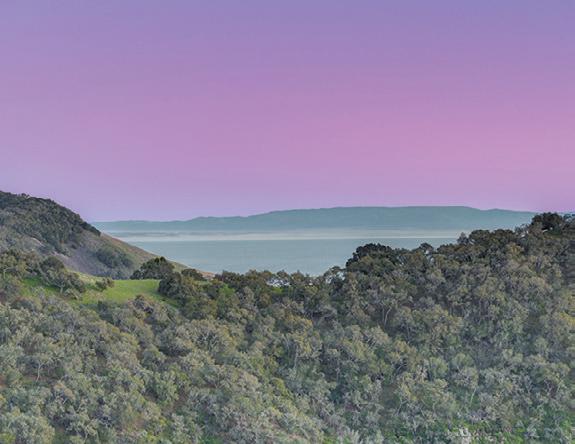
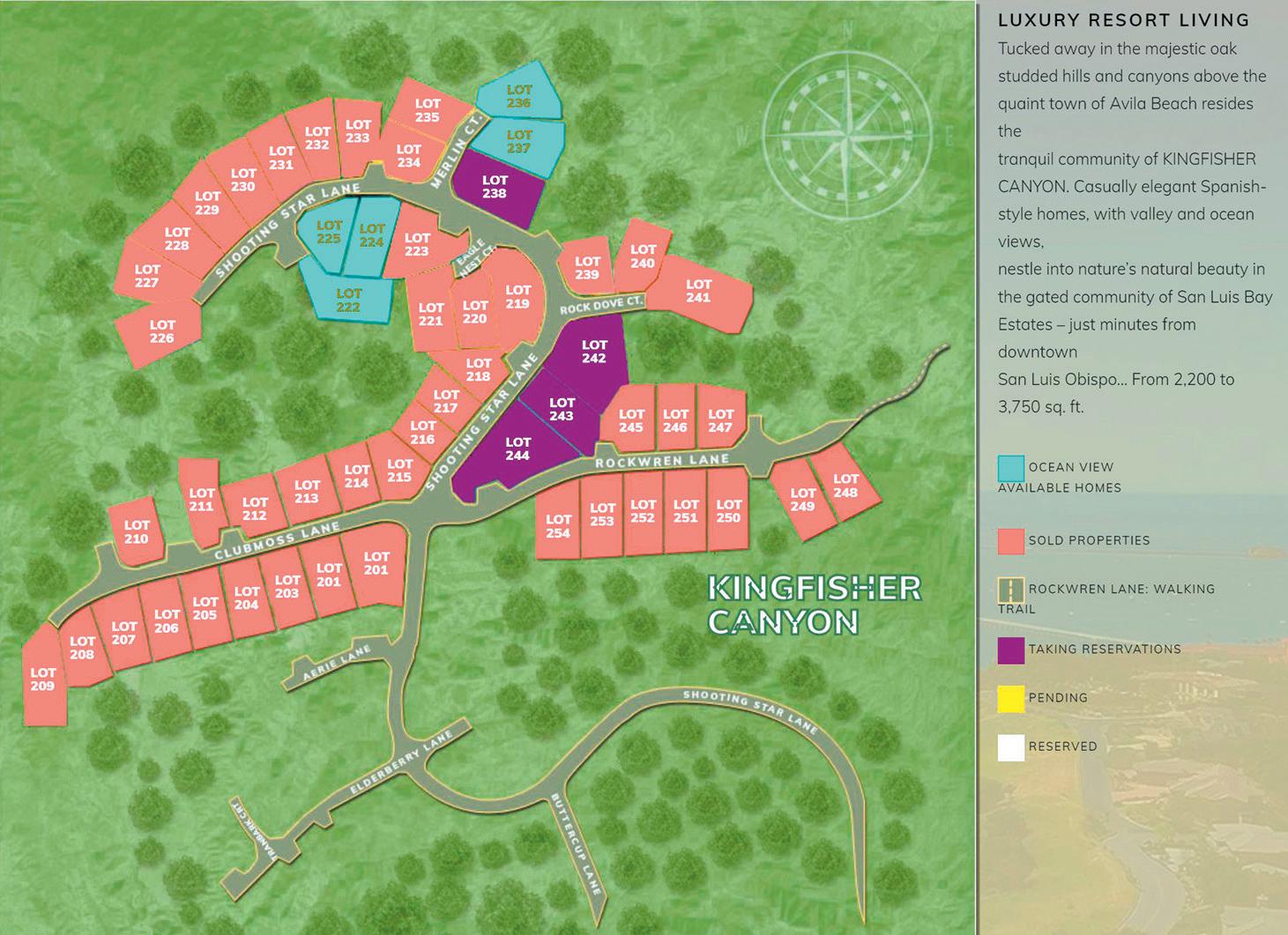

SanLuisBayRealty.COM












With an ever changing Real Estate market, adjusting interest rates, extremely low inventory. Make sure you work with an experienced, professional agent who has deep roots throughout the Central Coast. Call Taylor North for your real estate needs! Taylor will guide you every step of the way through all of your Real Estate needs, investments, market details and property valuations based on current market conditions and comparables.
Taylor North closed more than $57 Million in 2022 and he thanks you for an amazing year.



He hopes to serve you in 2023!
Call Taylor North for your real estate market report, free home evaluation, or any of your real estate needs. Cell: 805-709-1126